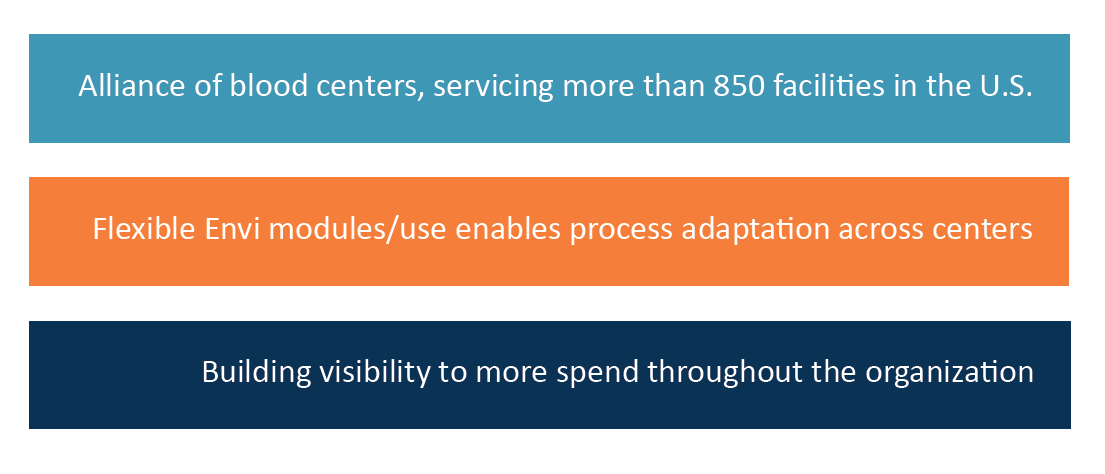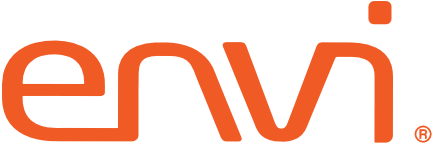
The Alliance for Community Transfusion Services (ACTS) is a strategic and operational alliance of self-directed, independent community blood centers that model the values of community blood banking and support one another through group initiatives, shared resources, and collective expertise. Each year, the 16-member community collects, tests, processes, and distributes more than 1.8 million blood products to over 850 healthcare facilities throughout the U.S. The strong collaborative among the ACTS members help ensure that blood products and related services are delivered on a consistent, timely, and cost-effective basis.
THE ACTS STORY
A Goal to Improve Internal Cost Efficiences
The ACTS alliance of blood centers formed in 2010 as a result of change occurring in the industry. As hospitals transitioned from independent facilities to multi-hospital integrated delivery networks, blood centers found it more challenging to continue to deliver products at the pricing hospital groups wanted. Teresa Footman, Purchasing Manager, ACTS, reflected that early on, one of the challenges the blood centers were dealing with was that each of the alliance centers was on a different materials system and didn’t have a way to share information and create efficiencies across the enterprise.
“To help the centers reduce their prices to hospitals, we had to find ways to reduce costs internally. The team found Envi, and determined that it would be a good fit for a number of the centers.”
Today as new ACTS members are added, Footman is able to help interested blood centers get started on Envi. “We’ll get their users, rules and permissions set up, and help them get started with orders, confirmations, understanding flags that show items needing attention. We do everything on the front end, to help a new member get started successfully on Envi.”
A Flexible Solution
The organization has standardized to a single item master. As vendors or items change, changes can be applied to the entire enterprise. ACTS works with Provista to help keep contracts and items updated, source new vendors, and validate contract pricing. “Provista helps us review our spend and ensure correct prices are in use,” said Footman. “I can look at our data to analyze spend and make recommendations about purchasing. For example, if I see a center is using a vendor that’s outside a contract, I can help
direct them to better solutions. While the final decision rests with the center, I can help them find ways to reduce costs on an ongoing basis.”
As the organization continues to improve, Footman wants ensure all spend is visible. “Most of our blood centers using Envi will put all their spend – including services – through Envi. They’ll create POs and then we can track and manage that spend with greater visibility.” As more spend is put through Envi, reporting becomes more inclusive and accurate.
Additionally, more centers are increasing capabilities around inventory management. Some are doing a monthly physical count, while others are annual. In the future, Footman would like to increase inventory management processes, but recognizes that the flexibility of Envi allows them to accommodate different location preferences.
“As we brought Envi live in different centers, in many cases, we were able to fit processes that were already
established. For example, while some centers use a central supply warehouse, and the ACTS sites use requisitions to order supplies, others don’t. Because our centers use different processes, we’ve found that to be a real strength of Envi. The modular approach lets us adjust accordingly.
Envi has been a pretty seamless solution because our centers vary in what they want to do inside of the system.”

The major benefits coming from ACTS’ use of Envi are reporting, training and the mobile app. Footman noted, “The reporting is fabulous. I can answer requests that come in from around the organization, such as ‘how much did donor services spend with this vendor?’ The training modules are amazing. When someone new comes on, I don’t have to develop training. Instead, I point them to the online training, and they’ve got everything they need. And finally, when I’m travelling, I love that the mobile app keeps everything moving. Any follow-up I need to do is easily accessed from my phone.”
Footman noted ACTS has also benefitted from Envi’s continuous improvement. “The system is always
developing new features and functions, so we’re always getting something new we need. Plus, Envi is so user
friendly. I can’t think of anything I don’t like about the system.”
Envi Best Practice Highlights
- Training modules are utilized throughout the organization, helping increase Envi expertise
- Reporting helps provide system-wide visibility and answer data-related questions
- Continuous improvement of Envi fuctionality helps increase value for the organization
- Mobile app allows workflow management without delay
Recommendations
Envi has become such a foundational resource in the ACTS organization, Footman would like to see the alliance’s blood centers use more of the available modules. “The more centers we have using Envi, and the more modules we use, the better our data will be. We have opportunities to increase the work we’re doing with Envi and streamline more of our processes. For organizations thinking about
Envi, I’d recommend using as many modules as possible because it will reduce manual processes. One to definitely consider is the AP module, which will help by creating checks and balances within your existing processes.”
